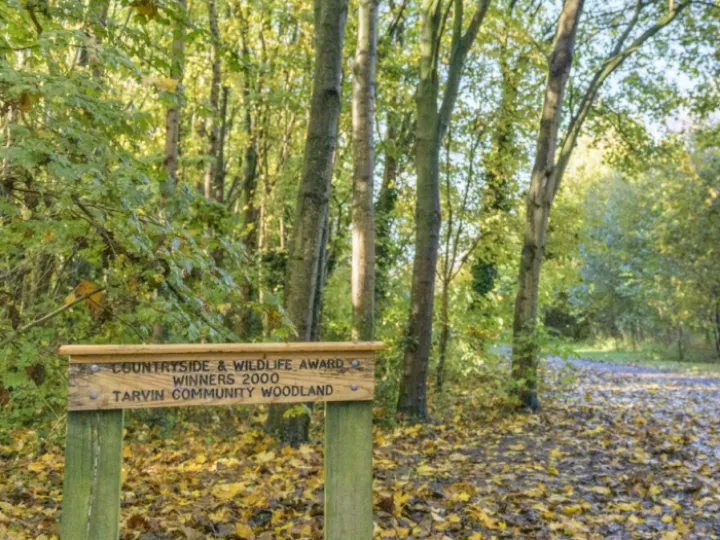Tarvin Woodland Trust – Tree Management
From Steve Parker, Tarvin Community Woodland Trust ....
[Using trees as a crop.
]
[As you enjoy your walks through our Community Woodland, you may be wondering about some of the work that is being carried out by our group of volunteers at this time of year. One aspect of this involves COPPICING.
]
Coppicing is an ancient technique in managing woodlands by cutting selected trees close to the ground on a regular cycle. The dormant buds at the base of the stump (known as the Stool) then re-grow to create a crop of the dense strands of multi-stemmed trees. The new, long, straight stems were traditionally used to provide a sustainable supply of timber, which could be be used for hurdles and fencing, as well as for the turning of bobbins, spindles and chair legs.
In our own woodland, we coppice to open up the area to sunlight, thereby improving the biodiversity of the woodland area and encouraging a wider range of plants and wildlife.
[Which species can be Coppiced
]
Most of our native trees – Oak, Sweet Chestnut, Willow, Lime, Hornbeam, Field Maple, Rowan, Alder and Hazel can be successfully coppiced. These are usually coppiced in cycles of 6 to 8 years, depending on the species. An oak tree would be 15 to 20 years, because it grows so slowly. Rapidly-growing hazel can be coppiced every 3 or 4 years. In our woodland, it is mostly hazels that we coppice and, once the trees have been coppiced, we collect the dead branches or 'brash' and use them to form dead hedges (have a look to see if you can spot them as you walk through the woodland). These dead hedges can be used to make barriers to protect young tender shoots and walkways and also create further wildlife habitats.
POLLARDING.
This is an alternative way of managing trees to produce a crop of long , straight poles and it involves the regular cutting of the upper branches of a tree to encourage the re-growth of dense foliage at the top of the tree, thereby opening up light levels. It also restricts the height of a tree, so that it is kept it at a manageable level. The cutting is often done at a height which means that animals are unable to eat the tender young growth. The cut branches can be used for firewood and as building material. Species that can be pollarded are Willow, Ash, Beech, Hornbeam, Lime and Holly.
We do not carry out pollarding in our Woodland, but you may notice that the trees outside St Andrew's Church, on the walk from the road to the front door, are sometimes pollarded to control their growth.
If you are interested in joining our volunteer group, we can be found on the Woodland on most Thursday mornings.
Steve Parker
Trustee and volunteer.
Quick Links
Get In Touch
TarvinOnline is powered by our active community.
Please send us your news and views.








